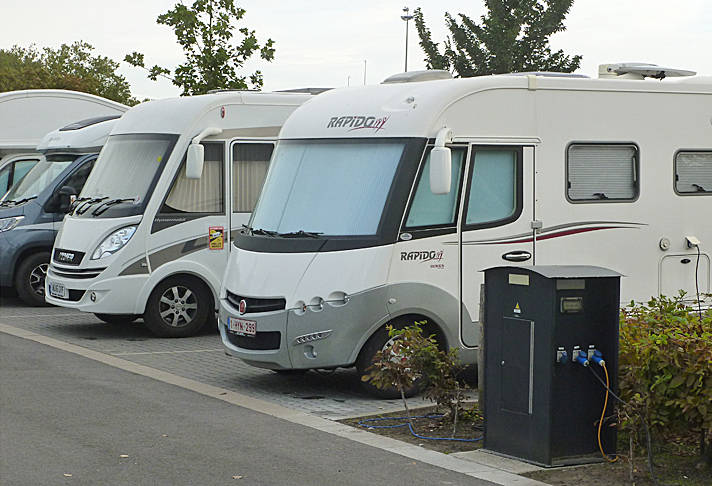Scarcely more than a year after ProPublica reported that algorithm-driven software was partly responsible for exorbitant apartment rents, the Wall Street Journal reported yesterday (subscription needed) that two of the companies behind such practices are being sued by tenants in federal courts in Tennessee and Washington. The lawsuits come as the U.S. Justice Dept.’s antitrust division continues an investigation that started last fall and considers potential enforcement action against RealPage, the company at the heart of ProPublica’s reporting.
At issue is a pricing system, used by dozens of landlords when setting their rates, that analyzes giant amounts of proprietary data —provided by those same landlords—to come up with “suggested” rent increases. This amounts to collusion that is illegal, anticompetitive and keeps rents artificially high, the lawsuits contend, pointing to such evidence as a landlord saying the pricing software enabled him to “push rents more aggressively” and “quickly.” Marketing materials from RealPage, meanwhile, boasted of the opportunity for landlords to “outperform the market by 3% to 7%.”
Why should that matter to you? Quite possibly because a similar dynamic is developing within the campground industry, as I reported in broad strokes just days after the ProPublica story, and then more specifically this past July. That’s when Campspot, a leading reservation software company now serving more than 2,200 RV parks and campgrounds, announced its release of Signals, a computerized database that enables campground owners to see the competition’s aggregate rates, occupancy, revenue per site and other variables in real time.
As with RealPage, Campspot maintains it’s simply amassing “anonymized metrics,” so no proprietary data is disclosed. And as with RealPage, Campspot stresses that it’s only enabling its customers “to compare their performance against a recommended comp set”—what they do with that information is up to them. Indeed, in a consolidating industry that is seeing a rapid increase of investor-owned chains, Campspot sees itself as providing smaller operators with tools to offset their larger competitors’ advantages of scale and marketing resources. “Our goal is to level the playing field,” a Campspot executive assured me in August.
Well, maybe. Then again, Campspot is rapidly closing in on oligopoly status—it claims to be processing approximately 25% of all campground reservations in North America—and can fairly be said to occupy the “big data” niche within the campground industry that RealPage is accused of claiming among landlords. Indeed, a letter from four U.S. senators to the Dept. of Justice earlier this year raised concerns that RealPage’s software, YieldStar, was playing a significant role in driving rent inflation in some of the country’s biggest markets—even though YieldStar’s data base represents only 8% of all rental units nationwide, or less than one-third Campspot’s market share of campground reservations.
“Given YieldStar’s market share, even the widespread use of its anonymized and aggregated proprietary rental data by the country’s largest landlords could result in de-facto price-setting by those companies, driving up prices and hurting renters,” the senators wrote. Similarly, the algorithmic use of “big data” across industries as varied as grocery chains, ride-sharing companies and the pork and poultry industry has resulted in ever more widespread automated pricing across the economy, increasing costs, reducing market competition and fueling rising concern in the Biden administration.
The campground industry is neither as large nor as vital to social welfare as its apartment counterpart—although the balance keeps shifting, as more money rushes into the sector and campgrounds increasingly accommodate long-term residents—and therefore tends to fly under the regulatory radar. But that creates a conundrum for Campspot, whose business plan depends on attracting attention, even if some of it is unwelcome. For example, the Inc. 500 for 2023, a list of the country’s fastest-growing private companies, was announced just a couple of months ago—with Campspot weighing in at #341, up from its debut appearance the year before, at #487. The company’s three-year revenue growth rate? An astonishing 1,693%. Those are the kinds of numbers, when viewed in the context of market share, that can make antitrust regulators sit up and take notice.
But unless and until they do, the juggernaut keeps rolling along. The National Association of RV Parks and Campgrounds (ARVC) announced mid-October that it has a vaguely defined “new partnership” with Campspot, even though a fistful of other campground reservation companies also are ARVC associate members. Just what this new partnership entails isn’t clear, other than scheduling Campspot to lead a “featured breakout session” Nov. 8 at ARVC’s annual convention. (The session title, interestingly, is “Navigating the Camping-Hotel Crossover: Lessons for Success in Outdoor Hospitality,” attesting to Campspot’s founders’ hotel industry roots.) But it does attest to Campspot’s increasing influence and agenda-setting capability within the industry.
Ultimately, being successful in business is neither a sin nor illegal. The point at which it becomes questionable, however, arises when “success” flows from unfair advantage. The lawsuits in Tennessee and Washington, as well as any Justice Dept. action against RealPage, may well signal whether big data has crossed that line—and if it has, whether Campspot has something to worry about.


